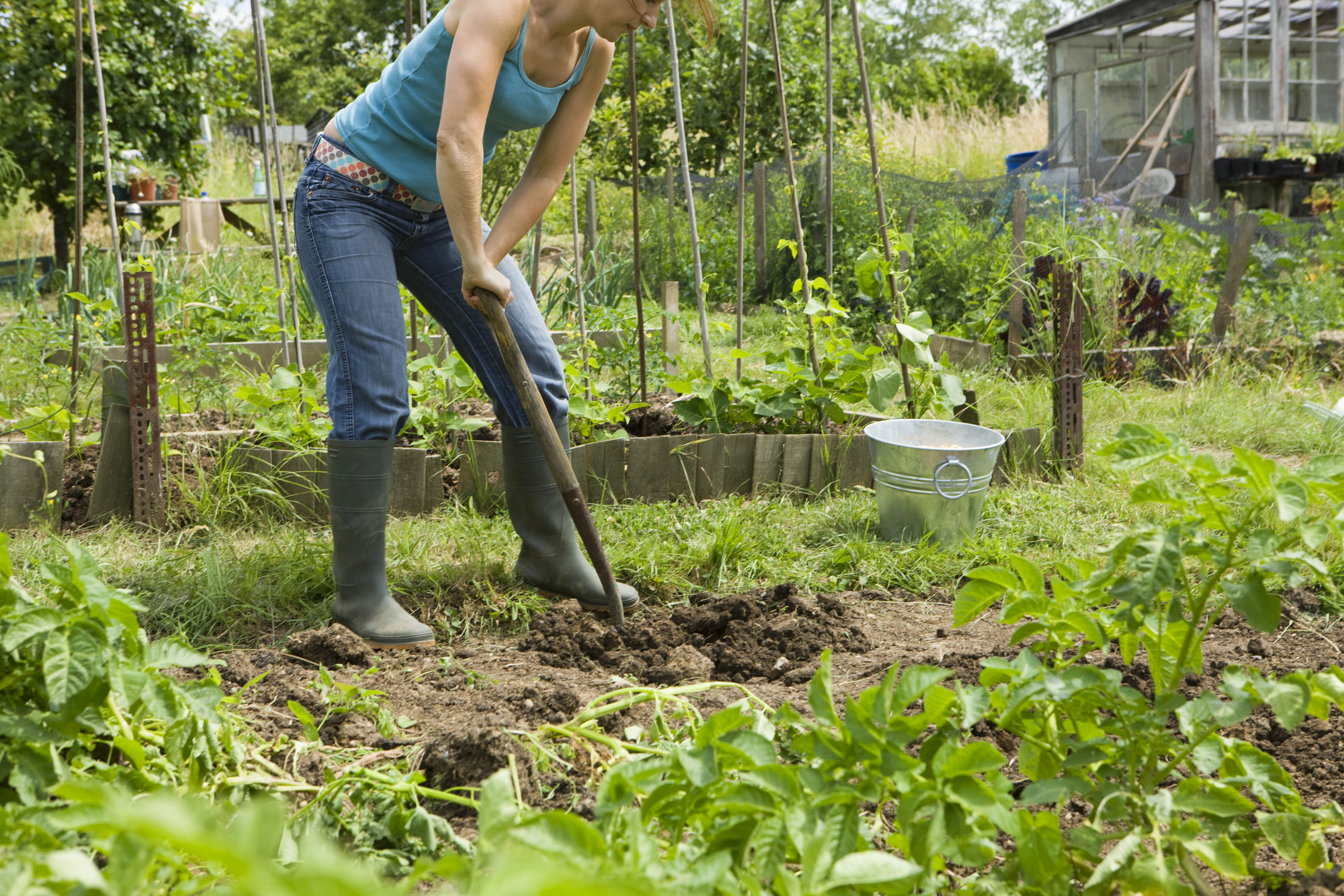Tips and Tricks for Planning Your Garden

image credit Shutterstock
If you’re anything like me, you love the quiet calm of Winter…but also can’t wait for Spring! The short days, grey skies and cold weather leave you missing the sun on your skin, the dirt under your nails and the taste of fresh produce.
Inevitably, every year, I get excited about planning my garden and start my seeds too early. Weather here in Virginia is very unpredictable. As I write this, in early February, it’s 70 degrees out! But they’re calling for snow tomorrow!
So if you’re like me, and planning your summer garden already, here is a collection of my tips and tricks to make your garden a success.
Why Plan Your Garden?
Taking the time to plan out your garden will prevent a lot of common gardening mistakes. The most common gardening mistakes (and I’m guilty of ALL of them) are:
Growing too much of one kind of veggie
- Not growing enough
- Starting too early
- Starting too late
- Running out of room
Putting in the work before any seeds actually get sown will help prevent, or at least mitigate, some of these mistakes.
How to Plan Your Garden
The best way to start is by asking yourself a few basic questions:
- How many people are you feeding?
- Do you want a surplus to can or preserve or possibly sell or give away?
- How do you plan to start each plant? Direct sow? Starting seeds indoors?
- When should each crop be placed in its final spot?
- What’s the lifecycle of each plant? How long will the plant take to mature?
- Will you harvest a little at a time over weeks or months? Or is the harvest all at once and then the plant is done?
Before You Begin
Before you begin, determine your plant hardiness zone or grow zone. The USDA has theirs here: Plant Hardiness Zone Map.
Then test your soil. The very basic test is for pH. Most of the vegetables you’re going to want to grow do best between 5.5-7.5. However, if you know certain parts of your garden tend to be more acidic (or alkaline), you’ll want to make a note of that. If you need to add amendments to your garden area to change the pH.
Once you’ve laid the foundation, you can begin this year’s garden.
Start With What You Already Have
The first first step in planning this year’s garden is to see what you already have. Gather your seed packets from the prior years and lay them all out in front of you. I make a ritual of this. I pour myself a cup of coffee, put on some music and lay out my seeds on the kitchen floor. It makes it easier to group them by like. Tomatoes here, squashes here, lettuces here, etc.
Then I fill out index cards with some basic info on each type of seed I have. Such info includes:
- pH
- hours of sunlight
- inches of water per week
- spacing
- days to maturity
- timing of direct sow/transplanting seedlings
Sketch Out Your Garden
Once I have an inventory of the seeds I already have, I’ll sketch out a diagram of my garden area. I use graph paper and measure it out so that every line represents six inches. Every two lines is one foot. Most plants require spacing at least three inches, so this makes it easy to measure. Depending on the size of your garden, though, you may need to adjust!
Plan out your plants with the seeds you already have, and the space your garden area provides. If you have room left over, break out your seed catalogs!
My favorite (and of course they’re FREE!) are:
Baker Heirloom Seeds
Seeds of Change
Seed Savers Exchange
Botanical Interest
Sotall -- my personal favorite - they have a bank of free seeds and take crypto for payment for their seed bank.
While you’re selecting the correct seeds for your garden, be sure to keep your grow zone in mind. Some varieties of plants do better in cold, or very hot and dry climates.
If you grew a garden last year, also keep a crop rotation in mind. Ideally, you’ll rotate what type of crop goes where on a three year rotation. This helps prevent pests and certain fungi from destroying a crop.
Succession planning is also important. Can you time the planting of one crop with the harvest of another? Will mature plants cast too much shade over new transplants?
That is why I like writing the plant information out on index cards. I can shuffle them around and try to get a visual of what plants will go where. Once I have the index cards lined up in roughly the areas I’ll have the plants, I write it down on my graph paper as my Final Draft.
Schedule Your Planting
On a calendar or your phone, plan out the days you’ll start your seeds and transplant your young plants. Find your estimate last frost date from the Farmer’s Almanac and work out from there. Some plants should be started indoors before the last frost, some must be sown outdoors a few weeks after the last frost.
Keep Notes
While you’re following your garden sketch, and your planting calendar, keep notes! What worked for you? What didn’t? Did some of your seedlings not survive? Did the squash get beetles (my nemesis)? Did you get too much rain? Not enough?
Watch how the sun moves throughout the year. The angle of the sun shifts throughout the year, which may affect your plants. I have a very tall tree to the south east of my garden and have learned over years of observation how it will affect my raised garden bed.
If one area of your garden suffers, you can begin to troubleshoot it. Gardening, however, is a game of years. You won’t be able to troubleshoot and solve your problems in the same year. This is why good gardening notes are so important.
Any other seed catalogs I've forgotten? What are you experiences gardening? Careful planning or throw-it-in-the-ground-and-wish-it-luck? Edible forest?

Hillsborough Homesteading Blog
Hillsborough Homesteading Facebook


Community Forums
Congratulations! You are now an Official Featured Blogger on Sotall.org. This post has been added to our growing directory of Steemit post for the Homesteading/Survival communities. You can claim your badge along with the code to add to your posts to let the world know you have chosen to help others Survive, Thrive and be Prepared! Click here to get the code
Thank you @fernowl13 !! I will add the badge now :) You all are doing great work, and I can't wait to add to the Sotall seed bank this Fall!
My go to for planning the timing of seed starting and putting plants out is the Week by Week Vegetable Gardener's Handbook by Ron and Jennifer Kujawski. I found it in the Baker Creek catalog a few years ago.
I love the idea of laying out the index cards with all the seed info on them. I think that will work out better than the wingin' it I usually do!
Great article. My garden is already planed, but it's always good to read other advices ! ;)
Great advice! Virginia is definitely a difficult state to figure out when it comes to growing a garden! Either way I love my home state and wouldn't trade it for anything!
I am a planner/ list maker. lol We are wanting to do a fall garden and I wanted a way to plan it out that would work for me. This is perfect. I can't wait to get my seed packets and index cards out. Thank you!